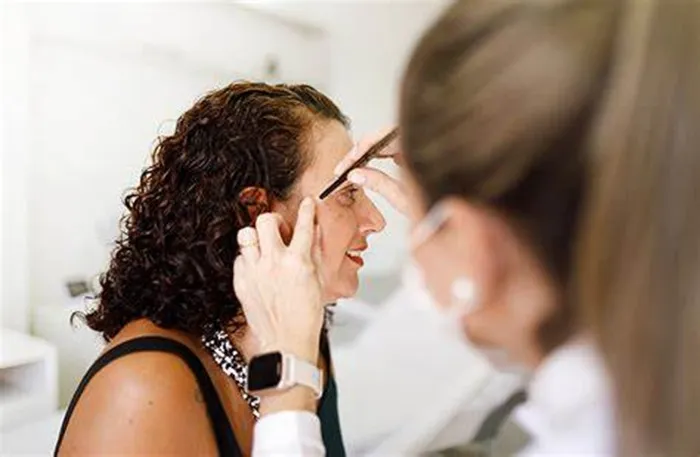Turkey has emerged as a leading destination for hair transplant procedures, attracting patients from around the world. The success of Turkish hair transplants can be attributed to a combination of skilled surgeons, advanced techniques, and a patient – centered approach. Understanding how the Turkish hair transplant process works is essential for those considering this treatment option.
Pre – operative Assessment
Medical History and Examination
The journey of a Turkish hair transplant begins with a comprehensive pre – operative assessment. The patient’s medical history is carefully reviewed, including any previous hair loss treatments, underlying medical conditions, and medications they are currently taking. This information helps the surgeon determine the most suitable treatment plan. A detailed examination of the scalp is also conducted. The surgeon assesses the density, texture, and quality of the existing hair in both the donor and recipient areas. Special attention is paid to the pattern of hair loss, as different types of hair loss, such as androgenetic alopecia (male – or female – pattern baldness), require specific treatment approaches.
Determining the Hair Transplant Technique
Based on the pre – operative assessment, the surgeon decides on the most appropriate hair transplant technique. In Turkey, two main techniques are widely used: Follicular Unit Extraction (FUE) and Follicular Unit Transplantation (FUT).
Follicular Unit Extraction (FUE): In FUE, individual hair follicles are extracted directly from the donor area, typically the back or sides of the head. A specialized punch tool, usually with a diameter ranging from 0.6 to 1.0 mm, is used to isolate each follicular unit. The advantage of FUE is minimal scarring, as only small, circular incisions are made. This makes it a popular choice for patients who prefer to keep their hair short.
Follicular Unit Transplantation (FUT): FUT, also known as the strip method, involves removing a strip of skin from the donor area. The strip contains numerous hair follicles. Under a microscope, the strip is dissected into individual follicular units, which are then implanted into the recipient area. FUT allows for the transplantation of a larger number of follicles in a single session compared to FUE, making it suitable for patients with extensive hair loss. However, it leaves a linear scar at the donor area, which can usually be hidden by the surrounding hair if kept at a medium to long length.
The Hair Transplant Procedure
Anesthesia
Once the technique is decided, the next step is the administration of anesthesia. In most cases, local anesthesia is used to numb the scalp, ensuring that the patient experiences minimal pain during the procedure. The anesthesia is carefully injected into the donor and recipient areas, and the patient remains awake throughout the operation. This allows the patient to communicate with the surgical team if they experience any discomfort.
Follicle Extraction
FUE Procedure: In the FUE technique, the surgeon uses the punch tool to extract individual follicles from the donor area. The extraction is done one by one, with the surgeon carefully selecting the follicles based on their quality and location. The extracted follicles are then placed in a special solution to keep them viable until they are implanted.
FUT Procedure: For FUT, the surgeon first makes an incision to remove a strip of skin from the donor area. The strip is then taken to a separate area where it is dissected into individual follicular units. This process requires precision and patience, as the follicles need to be carefully separated without damaging them.
Follicle Implantation
After the follicles are extracted, they are implanted into the recipient area. In both FUE and FUT, the implantation is a meticulous process. The surgeon creates tiny incisions in the recipient area and carefully inserts the follicles at a precise angle to mimic the natural growth pattern of hair. The density of the implantation is determined based on the patient’s hair loss pattern and their desired outcome. For example, in areas with more severe hair loss, a higher density of follicles may be implanted to achieve a more natural – looking result.
Post – operative Care
Wound Care and Medication
After the hair transplant, proper post – operative care is crucial for a successful outcome. The patient is provided with detailed instructions on wound care. This includes keeping the scalp clean and dry, and following a specific shampooing routine. The surgeon may prescribe medications, such as antibiotics to prevent infection and anti – inflammatory drugs to reduce swelling and pain.
Follow – up Appointments
Regular follow – up appointments are scheduled to monitor the progress of the hair transplant. In the first few days after the procedure, the surgeon checks the donor and recipient areas for any signs of infection or complications. As time goes on, the surgeon assesses the growth of the transplanted hair. The patient may be advised to avoid certain activities, such as strenuous exercise and excessive sun exposure, during the initial healing phase.
Hair Growth Timeline
It’s important to note that the results of a hair transplant are not immediate. In the first few weeks, the transplanted hair may fall out, which is a normal part of the process. New hair growth usually starts to become visible after a few months, and the full results may take up to a year or more to be fully realized. The surgeon will guide the patient through this process, providing reassurance and answering any questions they may have.
Conclusion
Turkish hair transplant clinics offer state-of-the-art techniques and personalized care, ensuring natural-looking results and a comfortable experience. By choosing a clinic that specializes in advanced methods like FUE, DHI, or Robotic DHI, patients can achieve optimal results with minimal downtime.
Related topics:
- Turkish Hairline Transplant: Everything You Need to Know
- Turkish Hair Plugs: A Detailed Guide
- How Much Does a Turkish Hair Transplant Cost?


